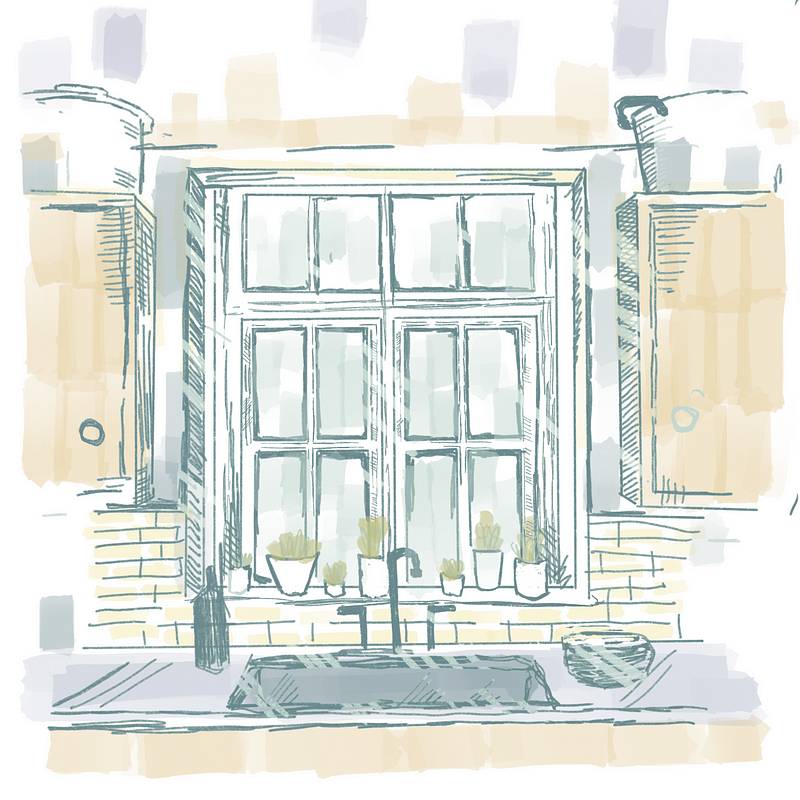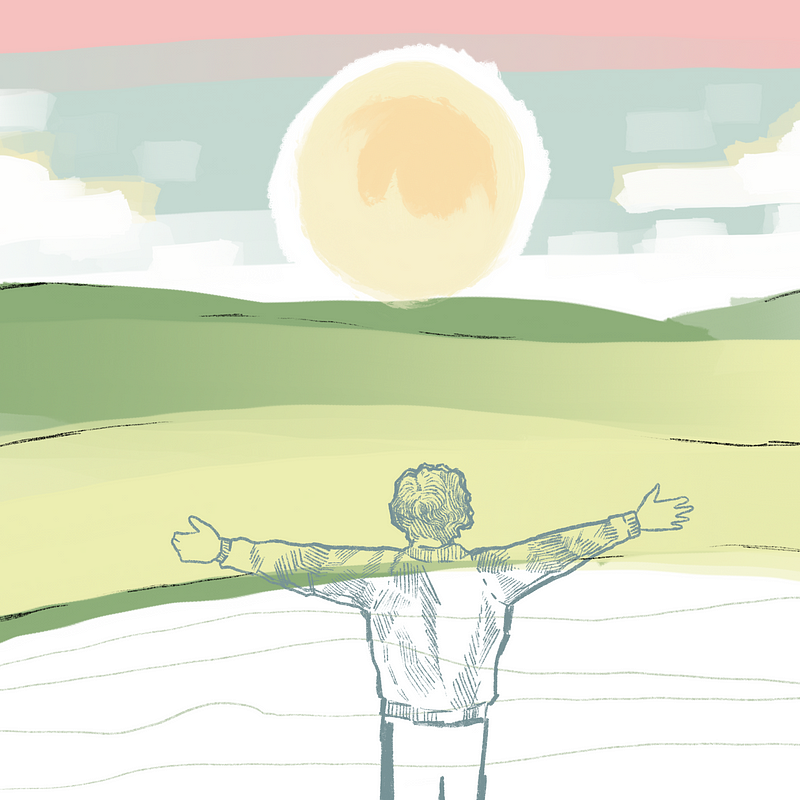In Memoriam of Normal

Panicked in a pandemic, teaching young kids taught me life keeps moving.
Story by Tunny Parrish
A s I stumbled into a darkened hallway, I stifled back a sob, feeling the tears seep into the two masks over my face.
“Damn it,” I said to myself. “Not again.”
For the second time this week, I had to excuse myself from work to combat a rapidly increasing panic attack. This one triggered by slime — ugh, how I hate it, but how the eight-year-olds I was teaching that week loved it. The combination of Elmer’s and store-brand Borax clogged my nostrils and left a sticky residue on my hands, stripping them of the sanitizer I’d just put on.
It all felt jarring, unfamiliar, scary. Mostly because I wasn’t used to feeling this way about my job.
In past years, I looked forward to summer camps at the museum. I traveled around Seattle, Washington, teaching curricula ranging from zoology to zombie survival. It wasn’t the profession I was planning to end up in, but I was satisfied. Yeah, I was slogging through days and making minimum wage, but how many 18-year-olds could tell you they knew how to make ice cream with liquid nitrogen?
I knew this summer would be different — how could it not be? — but I severely underestimated how much kids love to make messes.
“Look, Teacher Tunny!” one of them had shrieked minutes ago, thrusting a gelatinous ball of gunk into my face. “It fell on the floor, but it still smells fine!”
In past years I might’ve thought this was cute. Now, what once were normal headaches were sensory aggravations, catapulting me into another heart-racing meltdown.
Routines were easy at work, but outside of it, my life was falling apart. I would get home and rush out haphazard excuses for essays. Sleep would wrap its arms around me and drag me screaming into its clutches. I would wake the next morning and do it all over again.
“Soon, all this will be over,” I kept telling myself. “Pretty soon, everything will return to normal.”

The museum where I worked was hit unusually hard. They were part of the mere 8% of institutions in the American Alliance of Museums that laid off over 80% of their staff since lockdown began last year. If I had some sick sense of survivor’s guilt, I couldn’t imagine how my coworkers felt.
Faced with a potential source of income, the museum brought back a sliver of their former full-time staff for three more months of work. I’ve looked up to these people since I started volunteering here four years ago. Now that I was seeing them person-to-person, I found solidarity.
They, like me, had their niche skills reduced to party tricks.
Many of them were years, if not decades, out of college, and were suddenly forced to start fresh. And when, arm-in-arm, we would reach an inevitable September, it would bring with it the slow, grueling end of years flushed away.
I glanced at my phone. I only had four minutes left of my allotted 15-minute break. I wiped my eyes with one arm, and with the other I grabbed my walkie-talkie. My co-teacher knew I was having a hard time, but she couldn’t figure out where I put the Borax.
“Be up in a minute,” I choked into the receiver. I took a deep breath. I lifted myself to my tired feet in a pair of worn-down Converse.
“Everything will return to normal,” I thought to myself.
I made it back to my campers with two minutes left to spare. I shoved a pair of sunglasses on despite being inside, blaming it on the glaring sun overhead. In reality, I knew if the kids didn’t spot my tear-stained eyes, my coworkers would.
I took another deep breath. “So, how’s the slime going?”
And suddenly, it was like I never left at all. One girl immediately asked me for more glue to even out her mixture. A boy sitting caddy-corner to her asked me if he could swap his slime with his brother’s. At the table in the back, one girl held up the same gelatinous ball, unevenly dyed blue.
“Look, Teacher Tunny!” she exclaimed. “It’s the same color as my mask!”
It was like I never left at all.
And then it hit.
There was a reason these kids didn’t seem to fight the new rules. There was a reason they were so happy to show off their new masks, to give elbow bumps rather than high fives, to shout across the room to another campmate rather than run up to them.
What if, to these kids, all this was normal?
When I was their age, the world around me was gripped by a recession, a flu-like pandemic, and a hotly-contested election. But I cared more about which hot lunch I’d get that day.
I had no frame of reference for what normal was supposed to be, and so, everything was normal.

I contemplated this as I said goodbye to the campers that day, scrubbed down all the tables again, clocked out and walked to my bus stop. Rather than my usual commuting playlist, I hit shuffle and let Spotify do the work.
Was I really happier those past summers? Sure, I wasn’t in the middle of a pandemic, but I still felt stressed, exhausted and unhappy.
Were things that much better, or did we just assume they were?
Unlike pre-pandemic days, the bus back to my apartment was almost always empty. As it rolled to a stop in Pioneer Square, a woman standing on a nearby street corner caught my eye. She was engaged in a heated argument with a stranger, spit flying from her uncovered mouth, holding a sign that read, “MASK MANDATES ARE TREASONOUS.” I adjusted my masks as we picked up speed again. I chuckled to myself, feeling my breath fog up my disposable one.
I shuffled my music again and looked up at the bus display.
Three more stops.
Then tomorrow, we do it all over again.